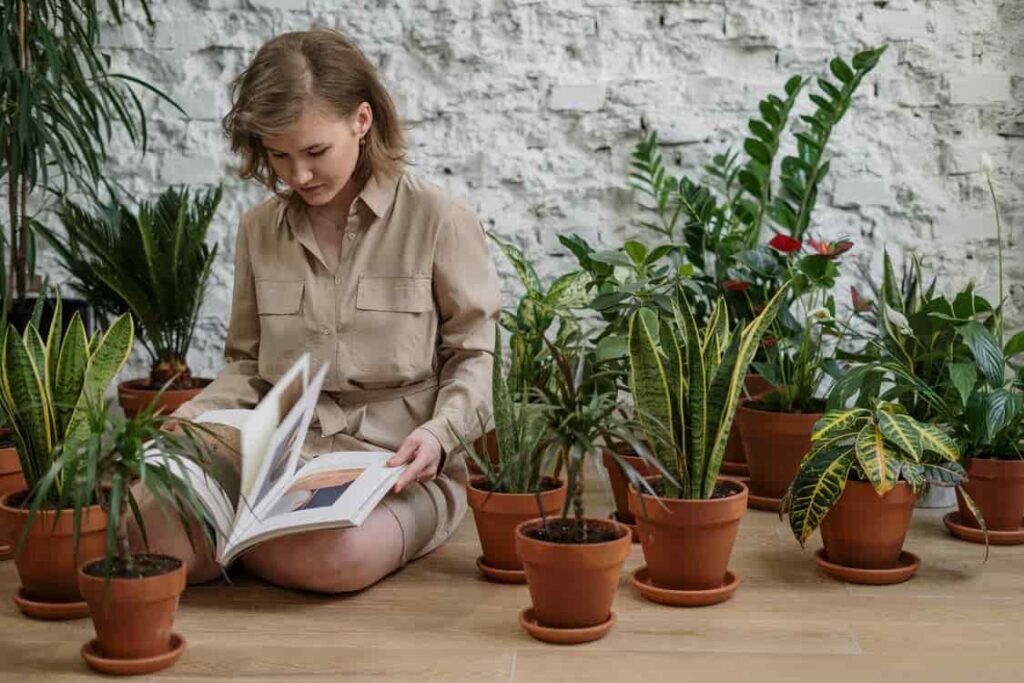Introduction:
This is the complete guide to home gardening. Everyone loves sitting out on their deck or patio and seeing the beauty of an organic flower garden. The colors and the scents can add hours of joy to any day.
Flower gardens help grow food. They attract honeybees, bumblebees, wasps, hummingbirds, butterflies, and beetles. These pollinators do much of the work in your edible gardens.
These insects and birds pollinate our food crops, from big to small, leading to increased yields and harvests.
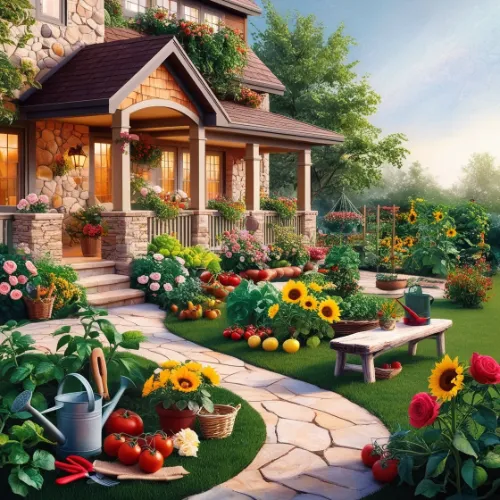
Guide To Home Gardening.
So, it is vital to know how and when to care for your plants. This applies whether you have a flower garden or plan to create one.
These instructions will help you find any flower-related gardening tips. They cover planting techniques and how to deal with pests and diseases. They are for both beginner and experienced gardeners.
Know Your Site:
Mary Ellen Cowan, a landscape architect, once said, “Really know your site. Listen to Mother Nature to learn about your land’s traits. Be honest with light, moisture conditions, and the topography.”
Knowing the place where you want to plant flowers is the first step in building an ideal flower garden.
Know Your Soil:
A vital tip to ensure a successful flower garden is to do a soil test.
Send your soil to a laboratory for testing, such as the UMass Soil and Plant Nutrient Laboratory, to gather soil samples.
Use the results from the testing laboratory to change your soil before planting.
Know Your Flowers:
Mary Ellen Cowan also said, “Learn what plants grow well in your soil. From there, you can figure out what to do design-wise.”
You can also read about “The complete guide to homes and gardens” here.
The Right Plant For the Right Place.
The success of your garden’s growth depends on your ability to determine your plants’ hardiness zone.
The USDA’s Plant Hardiness Zone Map shows average temperature trends in North America. It is a useful overview.
Maps of zone hardiness are based on the typical annual extremes for minimum temperatures in a particular region.
The USDA Zone Hardiness Map is divided into 13 planting zones. A 10-degree Fahrenheit differential for the average annual minimum temperatures sections them off.
The temperature in the associated garden zone is warmer the higher the number. To improve clarity, zones are split into subsets A and B. They represent a 5-degree temperature difference.
Do the plants you’ve picked need sun, shade, or a combination?
First, position your plants for the right light. Sun-loving plants need full sun. Shade-loving plants need some cover.
Full sun is defined as six or more hours of direct sunlight each day, not always constantly. A typical day with part shade includes four to six hours of sunlight.
Depending on how dark the shadow is, different definitions of shade apply. For instance, dappled shadow provides far more light than heavy shade.
How Do I Choose Flowers For My Climate?
Flowers should be selected based on your USDA Plant Hardiness Zone.
This zone outline assigns a number to each locale of the Joined together States. It is based on data such as normal, first, ice, and normal annual moo temperatures.
When you purchase blooms, see for those labeled for your toughness zone. Consider conditions in your locale, as well, when choosing flowers.
The USDA zone map doesn’t account for humidity or altitude. So, a moisture-loving plant, like hydrangea, might thrive in humid Illinois, zone 5. But, it would likely struggle in dry, zone 5 Colorado.
Observe the blossoms you see developing most regularly in your neighborhood. These plants are likely well-adapted to your locale and need little care.
Digging The Soil For Home Gardening.
The foundation of a beautiful flower garden is healthy soil. In general, soil that is loose, well-drained, and rich in organic matter is ideal for flowering plants.
While a small area is enough to plant flowers, a larger dig is better. It will let you add compost to improve the soil.
To reduce compaction, avoid working with or excavating on moist soil. Plants need a precise amount of space between soil particles for the development of roots.
One approach to find out if the soil can be worked is to take a tiny sample of it from a 3-inch hole. Form the dirt into a ball, then throw it onto a rock or other sturdy surface.
If the soil stays together, it’s too wet for planting, but if it shatters, it’s time to plant.
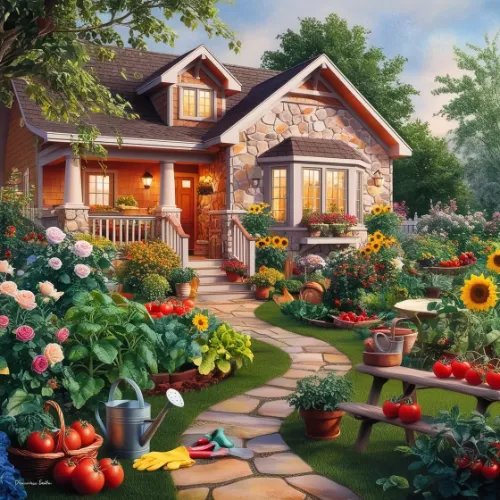
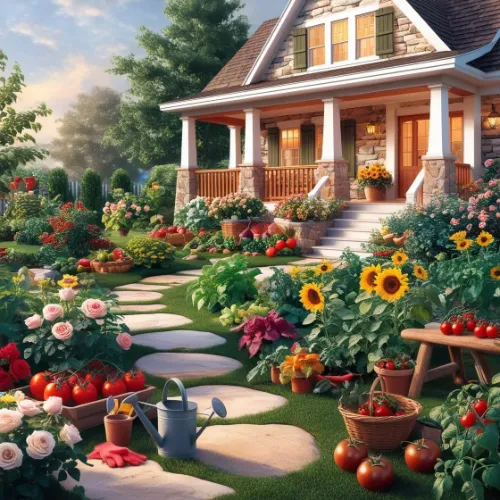
Planting Your Flowers.
Planting flower seeds is slightly different from planting nursery plants. So, follow the seed packet instructions for depth and spacing.
The information will be on the seed or bulb packet, but you can also ask your county extension office.
You should usually match the soil level to the pot. But, check the plant tag to be sure.
Irises and peonies are two examples of flowering plants whose rhizomes and roots prefer to be planted very shallowly.
After removing the plant from the pot, gently shake off some or all of the soil from the roots. Then, plant it in the assigned hole.
Backfill the hole with earth, firming it up but not pushing it down.
Flowers can be annuals or perennials and can be set up by seed, bulb, or transplants. If you select to sow seeds or plant bulbs, beyond any doubt you’re doing so at the rectify time for your area.
Garden center transplants will be more costly but will give more moment delight.
Ensure that the plants you choose have the exact growing requirements for sun and water.
Most annuals, but pansies, are effectively harmed by ice and are best planted in late spring or early summer.
In early spring, plant dormant, bare-root perennials, roses, and vines. Do this before new growth begins. Then, after the last frost, plant tender perennials.
Check with your neighborhood nursery master for directions on particular planting times.
To make a modern blossom bed, lay 3 to 4 inches of compost or fertilizer on the soil and burrow it into a profundity of 12 inches.
This may seem drastic. But, for perennial beds, it will pay off later in healthy, vigorous plants.
Annual blooms can get by with less soil prep.
To plant bare-root blossoms, evacuate the wrappings delicately and drench the roots in a bucket of water for a few hours.
Dig a gap huge sufficient to oblige the roots. Set the plant in the spot and fill the gap half with soil.
Fill the gap with water and permit it to deplete some time recently including the rest of the soil. Pack the soil tenderly with your hands to evacuate any discussed pockets.
Remove holder plants from the pots and tenderly press the soil to release the roots.
Set the plants in a hole of the same depth but slightly larger than the roots and fill the void with soil as described previously.
Water Deeply And Add Mulch.
Thoroughly drench the soil around your recently planted blooms. Plant blooms by and large require 1 to 2 inches of dampness each week to perform well, so water if you do not get sufficient rain.
It’s best to water deeply and less frequently than shallowly and more often so the roots of the plants grow deeper. Avoid keeping soil waterlogged, or the origins of your flowering plants may rot.
A layer of mulch-like shredded bark around your new plants will help. It will slow evaporation and reduce how often you need to water.
Mulch is one of the most useful increases that you can join into your blossom beds.
Mulch in your garden builds healthier plants. It controls weeds, prevents soil erosion, and retains moisture and nutrients. It also enhances your garden.
This simple component can save you countless hours of work. You’ll spend less time watering, weeding, and fighting pests.
Deadhead And Groom Your Flowers.
As your flowering plants bloom, feel free to cut them for bouquets. Clip off the went-through bloom heads to energize the plant to put more vitality into its foliage and winter survival.
Some blossoms, including zinnias, dahlias, and others, sprout once more when you expel the blooms.
Clip or drag any brown foliage for a cleaner see. Daylilies, in particular, advantage from the expulsion of ancient leaves.
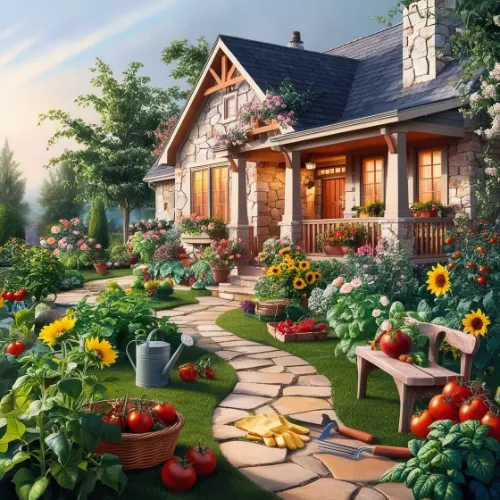
Conclusion:
Flowering plants make your garden feel more vibrant. They can also stop neighbors in their tracks.
Perennials can astonish year after year. Annuals can include speedy sprouts, nearly instantly.
You can start with seeds or buy transplants at the plant center. Once you’ve chosen your plants, follow a few basic steps to start your blooms in your yard.
Before you start burrowing, check the tag on your plants or the info on your seed packets. This will help you match the plants’ needs with the best spots to grow them.
If you have bloom beds, you can easily put unused annuals or perennials in any gaps to fill them.
Or you can continuously make an unused blossom bed to fill with all the wonderful blossoms you need to develop.
Planning your dream home is important before planning your gardening. You can click here to learn more about “The guide to planning your dream home.”

